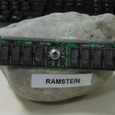The simplest dividend strategy that always works
You buy / save four dividend-paying dividend ETFs such as:
- iShares EM Dividend, A1JNZ9, 8,0% dividend yield, four distributions / year, 0.65% TER, -3% 5-year performance
- iShares STOXX Europe Select Dividend 30, 263529, 6,4% Dividend yield, four distributions / year, 0.32% TER, +38% 5-year performance
- iShares Asia Pacific Dividend, A0J203, 5,8% Dividend yield, four distributions / year, 0.59% TER, +11% 5-year performance
- iShares UK Dividend: A0HGV6, 5,4% Dividend yield, four distributions / year, 0.40% TER, +19% 5-year performance
> You could just as well take other dividend ETFs with attractive payouts or more than four to increase the number of payouts.
>> When comparing the performance of dividend ETFs, you must of course add the annual distributions. add. Some dividend ETFs only pay out a pathetic 2% to 3% p.a. and then of course had more price performance. << Swipe
15 advantages of this strategy
1) 16 distributions per year is very motivating (especially for beginners). With five different ETFs of this type it would be 20 per year.
2) These distributions are reliable, because if a company/stock cuts or cancels its dividends, it is automatically dropped from the respective index. Other shares move up. Always top of the dividend league in your portfolio.
3) The ETFs mentioned can be invested in free of charge with almost all brokers and banks.
4) By diversifying the many shares in several ETFs, the risk associated with individual shares is avoided.
5) You save a lot of valuable time, as it can be a full-time job to follow all the news, analyses, quarterly reports, annual reports, ratings, etc. of e.g. 20-30 individual stocks. That's what an analyst does. But most people already have a full-time job. Many have a degree, training, family & children, hobbies, duties, do sport, want to travel or have to look after relatives. If you waste countless hours on shares in order to earn a few euros more a year, depending on your position, your hourly wage is often just a few cents. You might as well go to work regularly, including tax.
6) Dividend payouts are often increased so that dividend growth is recorded.
7) The dividends collected are not spent on consumption, but reinvested in the weakest ETF every six months. This gives you even more dividend growth.
8) If you get a pay rise, you also increase the savings plan installments again. This increases dividend growth again.
9) As a result of points 6-8, you will eventually receive a 13th salary from dividends alone.
10) If you stick with it for a few more years, you will then collect five-figure dividends. Then people will arrive and ask how you managed that. It's easy to work out when you'll personally reach that point.
11) Even if you have to cancel your savings plans at some point due to an emergency, you will continue to collect your 16 dividends every year for the rest of your life. And then you pass on these ETFs and your descendants will collect 16 times a year for the rest of their lives. So it's very sustainable.
12) In crises and crashes on the financial markets, you continue to collect your dividends while others mourn their price losses. This gives you peace of mind and prevents "shaky" hands / ill-considered panic selling out of fear.
13) The constant distributions allow you to comfortably utilize your annual allowance without any trading, selling or market timing. It is so simple. Also suitable for junior portfolios.
14) This strategy helps to create a passive income, which then increases the measly German pittance pension very well after decades. The alternative is a deposit bottle pension. No thanks.
15) After a few years, you will become familiar with the phenomenon of collecting double-digit personal dividend yields. More than 10% is quite realistic, as you had much lower purchase prices years ago and the dividends are constantly being increased. It was the same for me a few years ago. I had the aforementioned UK Dividend A0HGV6 and Euro Stoxx 30 Dividend Select 263529 and after only a few years I already received 11% personal annual dividend yield. No overnight money or fixed-term deposit can match that. Unfortunately, I then sold both ETFs to sink the money into Wirecard. Biggest mistake. Please don't be as stupid as me. Thank you.
Maybe a nice post to save with the bookmark at the bottom right
> Another tip: Please check the ETF data directly on the issuer's website. Broker/bank data is often out of date and therefore incorrect.
>> What other advantages does this strategy have? How do you like it? I have explained it to many beginners and they have been very happy with it for years and are making great money without stress and work.
>>> In the podcast "Buy High. Sell Low" episode 17 this ETF strategy is explained in detail with a calculation example. Link in profile description. Link: https://open.spotify.com/episode/0LzAFILz0zNiErh5lCJOvS?si=16oQ7uLXQ3WGGXdfeIvJnA
#etf
#etfs
#ishares
#blackrock
#dividende
#dividenden
#dividend
#sparplan
#juniordepot
#strategie
#traderepublic
#aktien
#aktie










